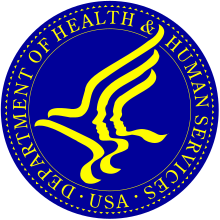Scientific misconduct is the violation of the standard codes of scholarly conduct and ethical behavior in the publication of professional scientific research. It is violation of scientific integrity: violation of the scientific method and of research ethics in science, including in the design, conduct, and reporting of research.
Medical ethics is an applied branch of ethics which analyzes the practice of clinical medicine and related scientific research. Medical ethics is based on a set of values that professionals can refer to in the case of any confusion or conflict. These values include the respect for autonomy, non-maleficence, beneficence, and justice. Such tenets may allow doctors, care providers, and families to create a treatment plan and work towards the same common goal. These four values are not ranked in order of importance or relevance and they all encompass values pertaining to medical ethics. However, a conflict may arise leading to the need for hierarchy in an ethical system, such that some moral elements overrule others with the purpose of applying the best moral judgement to a difficult medical situation. Medical ethics is particularly relevant in decisions regarding involuntary treatment and involuntary commitment.
In academic publishing, a retraction is a mechanism by which a published paper in an academic journal is flagged for being seriously flawed to the extent that their results and conclusions can no longer be relied upon. Retracted articles are not removed from the published literature but marked as retracted. In some cases it may be necessary to remove an article from publication, such as when the article is clearly defamatory, violates personal privacy, is the subject of a court order, or might pose a serious health risk to the general public.
Academic dishonesty, academic misconduct, academic fraud and academic integrity are related concepts that refer to various actions on the part of students that go against the expected norms of a school, university or other learning institution. Definitions of academic misconduct are usually outlined in institutional policies. Therefore, academic dishonesty consists of many different categories of behaviour, as opposed to being a singular concept.
The regulation of science refers to use of law, or other ruling, by academic or governmental bodies to allow or restrict science from performing certain practices, or researching certain scientific areas.
Professional responsibility is a set of duties within the concept of professional ethics for those who exercise a unique set of knowledge and skill as professionals.
Eric T. Poehlman, is an American scientist, formerly researching in the field of human obesity and aging. In 2000, Poehlman was investigated for scientific misconduct; the case continued for several years and in 2005, he admitted to fraudulent research practices. He had published research using falsified and fabricated data in studies on aging metabolism and obesity, including purporting to show beneficial effects on lipid profiles and abdominal fat in menopausal women being treated with hormone therapy. Poehlman became the first academic in the United States to be jailed for falsifying data in a grant application.
Media ethics is the subdivision dealing with the specific ethical principles and standards of media, including broadcast media, film, theatre, the arts, print media and the internet. The field covers many varied and highly controversial topics, ranging from war journalism to Benetton ad campaigns.
Archaeological ethics refers to the moral issues raised through the study of the material past. It is a branch of the philosophy of archaeology. This article will touch on human remains, the preservation and laws protecting remains and cultural items, issues around the globe, as well as preservation and ethnoarchaeolog.
Thereza Imanishi-Kari is an associate professor of pathology at Tufts University. Her research focuses on the origins of autoimmune diseases, particularly systemic lupus erythematosus, studied using mice as model organisms. Previously she had been a faculty member at the Massachusetts Institute of Technology. She is notable for her role in what became known as the "Baltimore affair", in which a 1986 paper she co-authored with David Baltimore was the subject of research misconduct allegations. Following a series of investigations, she was fully exonerated of the charges in 1996.
Research ethics is a discipline within the study of applied ethics. Its scope ranges from general scientific integrity and misconduct to the treatment of human and animal subjects. The societal responsibilities science and research has are not traditionally included and less well defined.
Scientific writing is writing about science, with an implication that the writing is by scientists and for an audience that primarily includes peers—those with sufficient expertise to follow in detail. Scientific writing is a specialized form of technical writing, and a prominent genre of it involves reporting about scientific studies such as in articles for a scientific journal. Other scientific writing genres include writing literature-review articles, which summarize the existing state of a given aspect of a scientific field, and writing grant proposals, which are a common means of obtaining funding to support scientific research. Scientific writing is more likely to focus on the pure sciences compared to other aspects of technical communication that are more applied, although there is overlap. There is not one specific style for citations and references in scientific writing. Whether you are submitting a grant proposal, literature review articles, or submitting an article into a paper, the citation system that must be used will depend on the publication you plan to submit to.

The Committee on Publication Ethics (COPE) is a nonprofit organization whose stated mission is to define best practice in the ethics of scholarly publishing and to assist editors and publishers to achieve this.

Data sharing is the practice of making data used for scholarly research available to other investigators. Many funding agencies, institutions, and publication venues have policies regarding data sharing because transparency and openness are considered by many to be part of the scientific method.
A Hippocratic Oath for scientists is an oath similar to the Hippocratic Oath for medical professionals, adapted for scientists. Multiple varieties of such an oath have been proposed. Joseph Rotblat has suggested that an oath would help make new scientists aware of their social and moral responsibilities; opponents, however, have pointed to the "very serious risks for the scientific community" posed by an oath, particularly the possibility that it might be used to shut down certain avenues of research, such as stem cells.

Plagiarism is the representation of another person's language, thoughts, ideas, or expressions as one's own original work. Although precise definitions vary depending on the institution, in many countries and cultures plagiarism is considered a violation of academic integrity and journalistic ethics, as well as social norms around learning, teaching, research, fairness, respect, and responsibility. As such, a person or entity that is determined to have committed plagiarism is often subject to various punishments or sanctions, such as suspension, expulsion from school or work, fines, imprisonment, and other penalties.

The replication crisis is an ongoing methodological crisis in which the results of many scientific studies are difficult or impossible to reproduce. Because the reproducibility of empirical results is an essential part of the scientific method, such failures undermine the credibility of theories building on them and potentially call into question substantial parts of scientific knowledge.

Elisabeth Margaretha Harbers-Bik is a Dutch microbiologist and scientific integrity consultant. Bik is known for her work detecting photo manipulation in scientific publications, and identifying over 4,000 potential cases of improper research conduct, including 400 research papers published by authors in China from a research paper mill company. Bik is the founder of Microbiome Digest, a blog with daily updates on microbiome research, and the Science Integrity Digest blog.
Research transparency is a major aspect of scientific research. It covers a variety of scientific principles and practices: reproducibility, data and code sharing, citation standards or verifiability.






